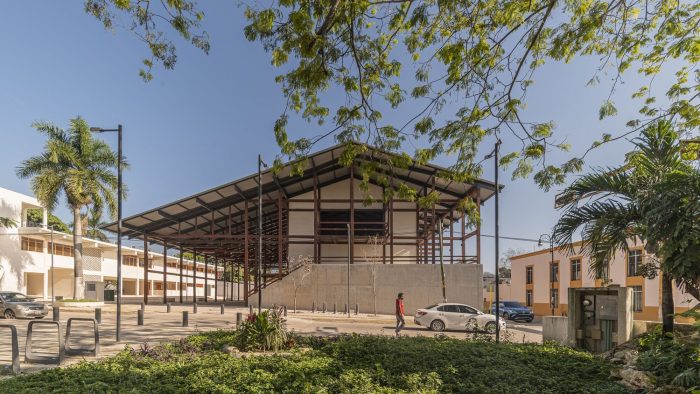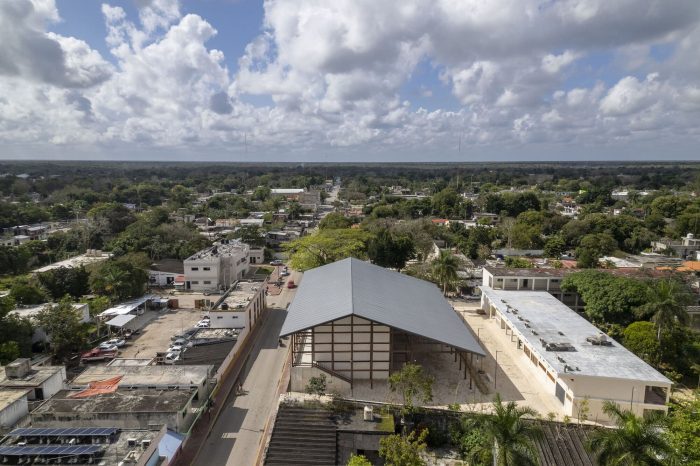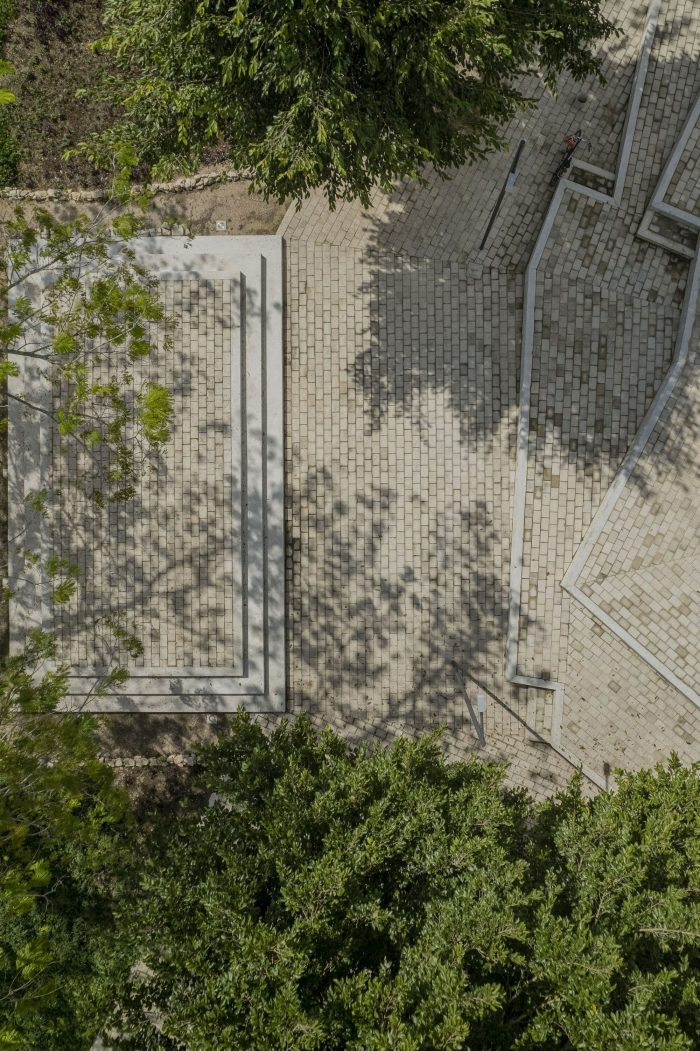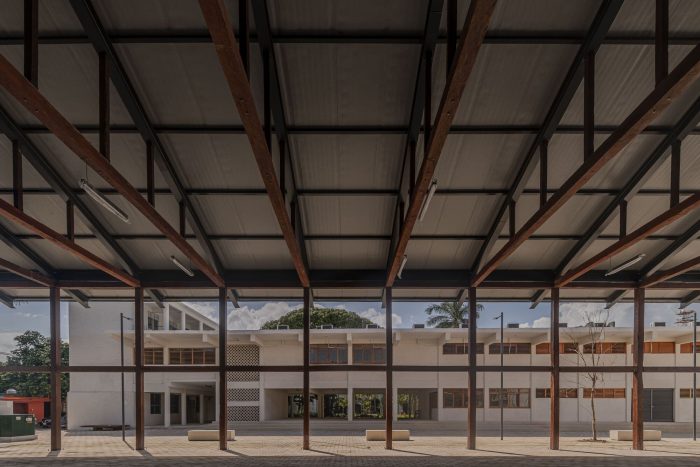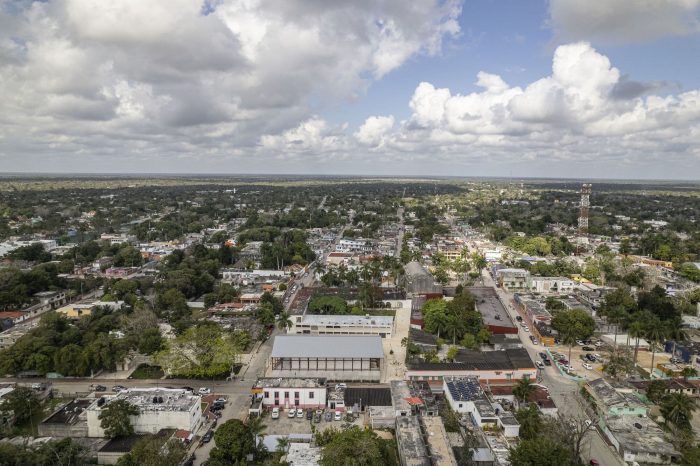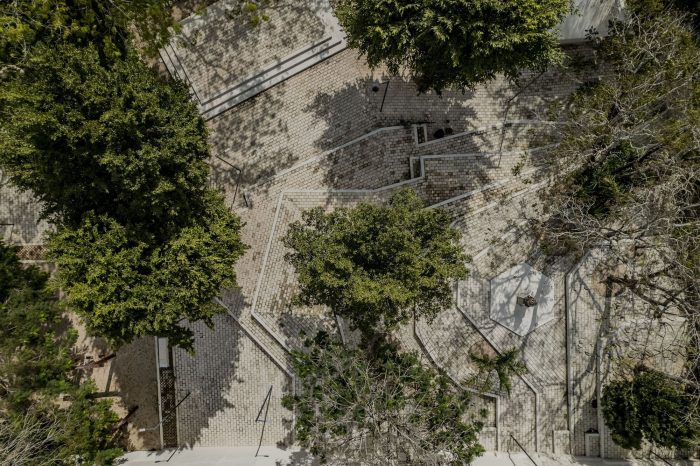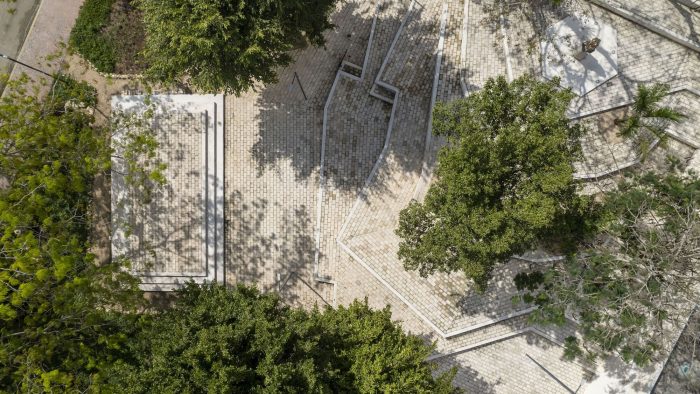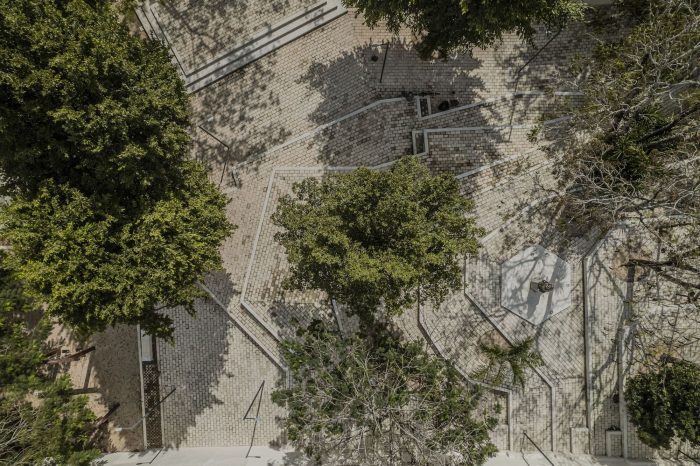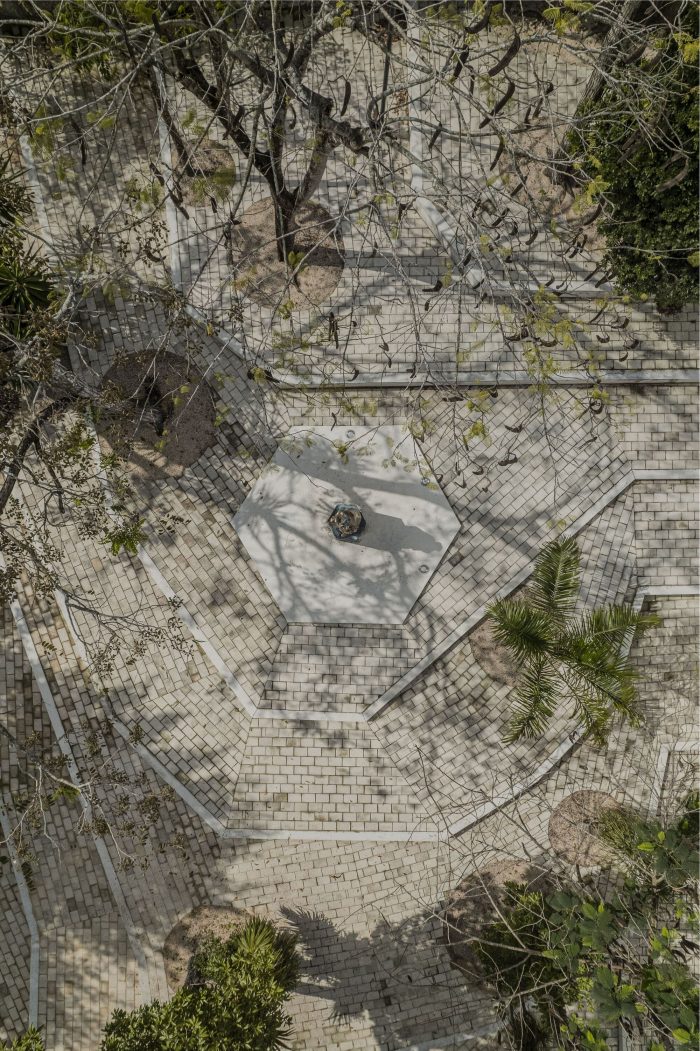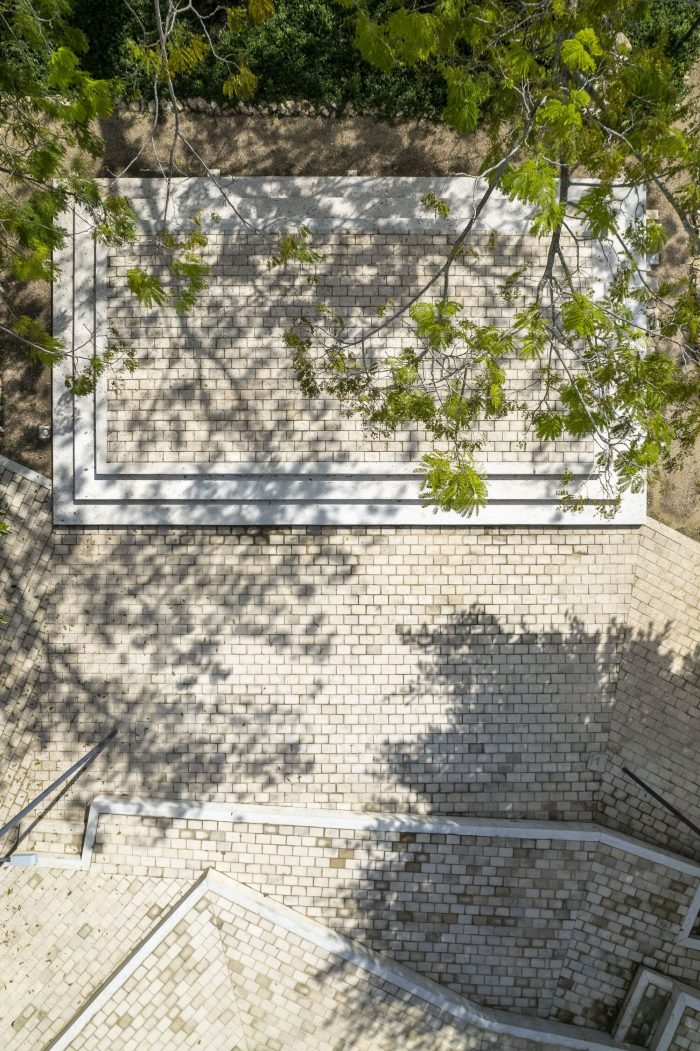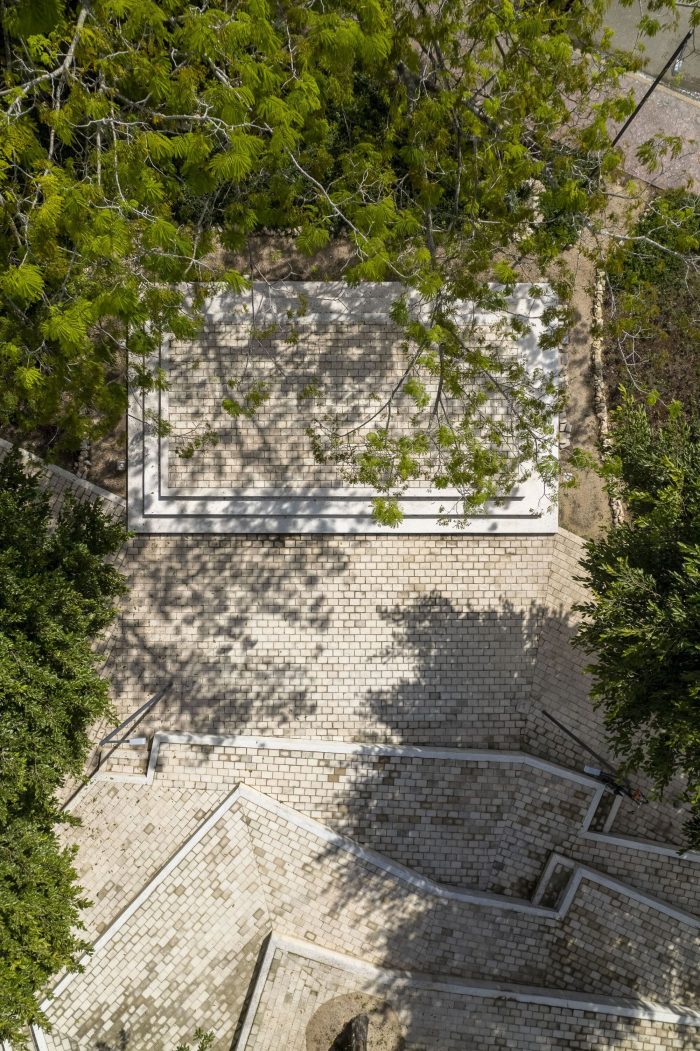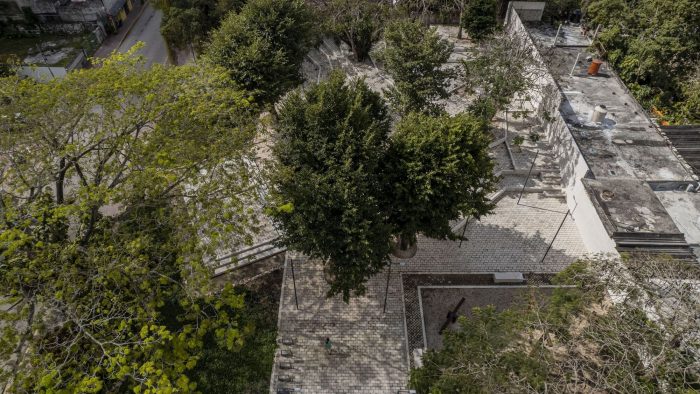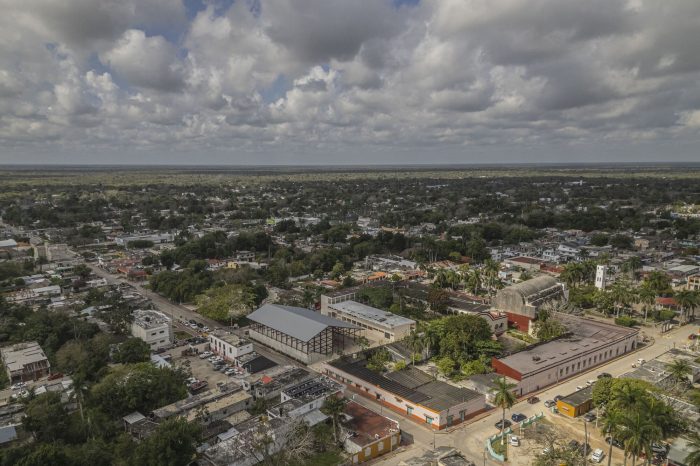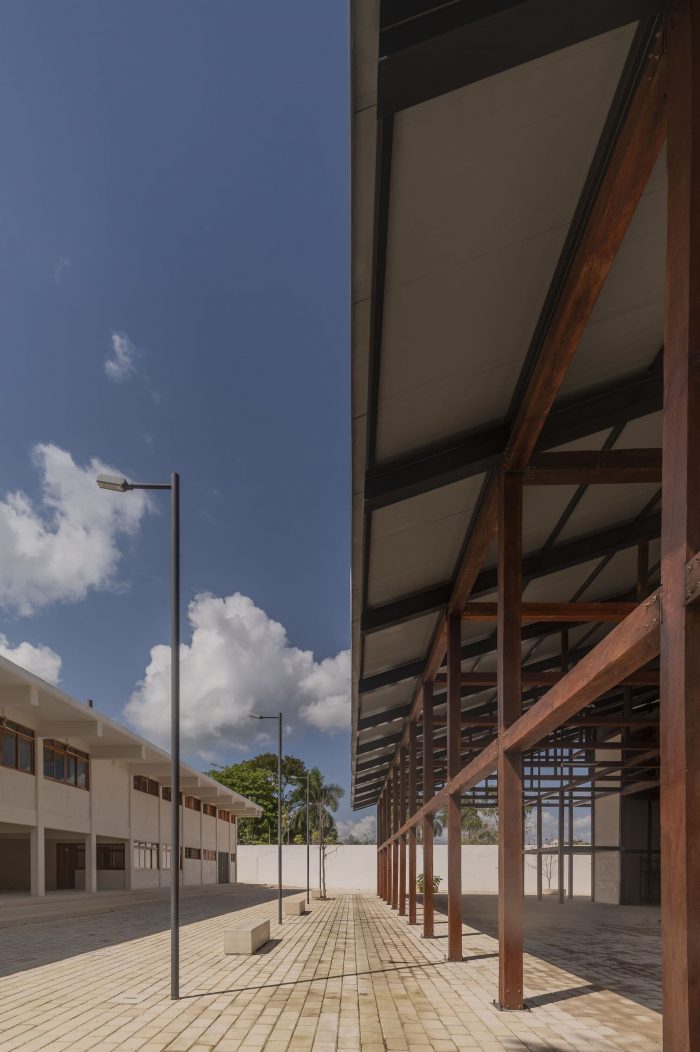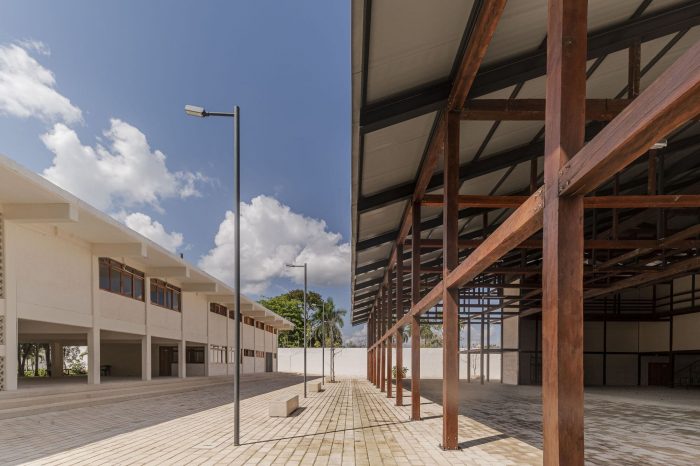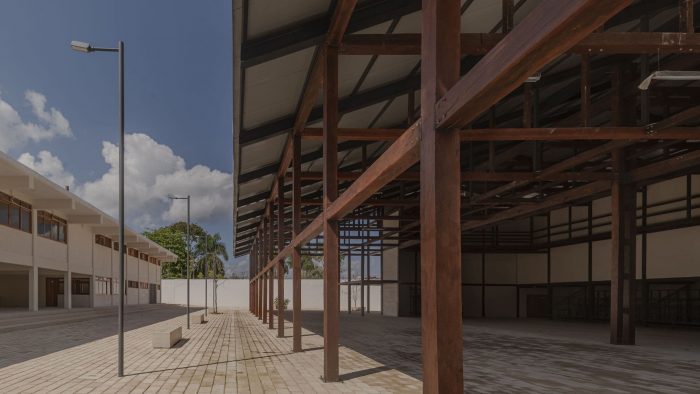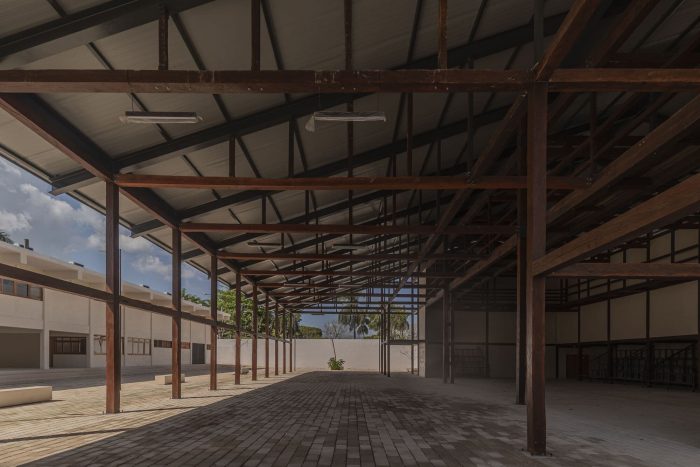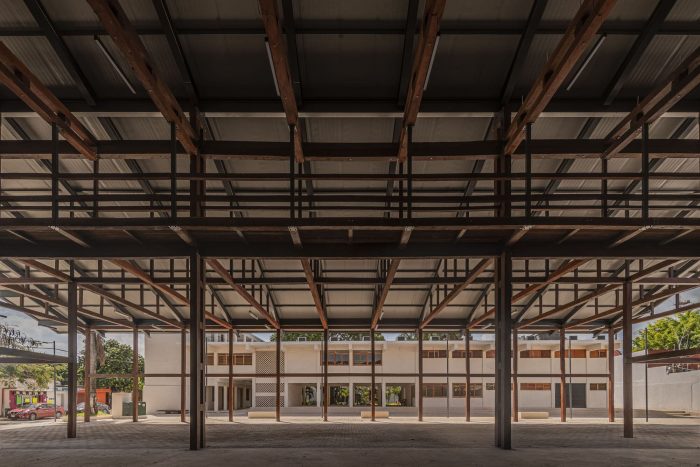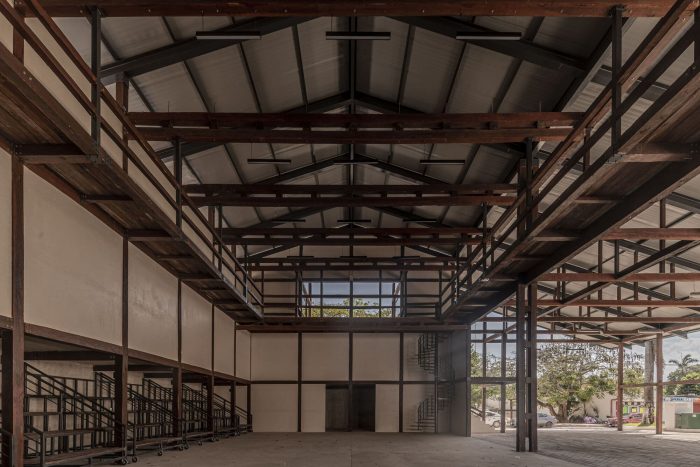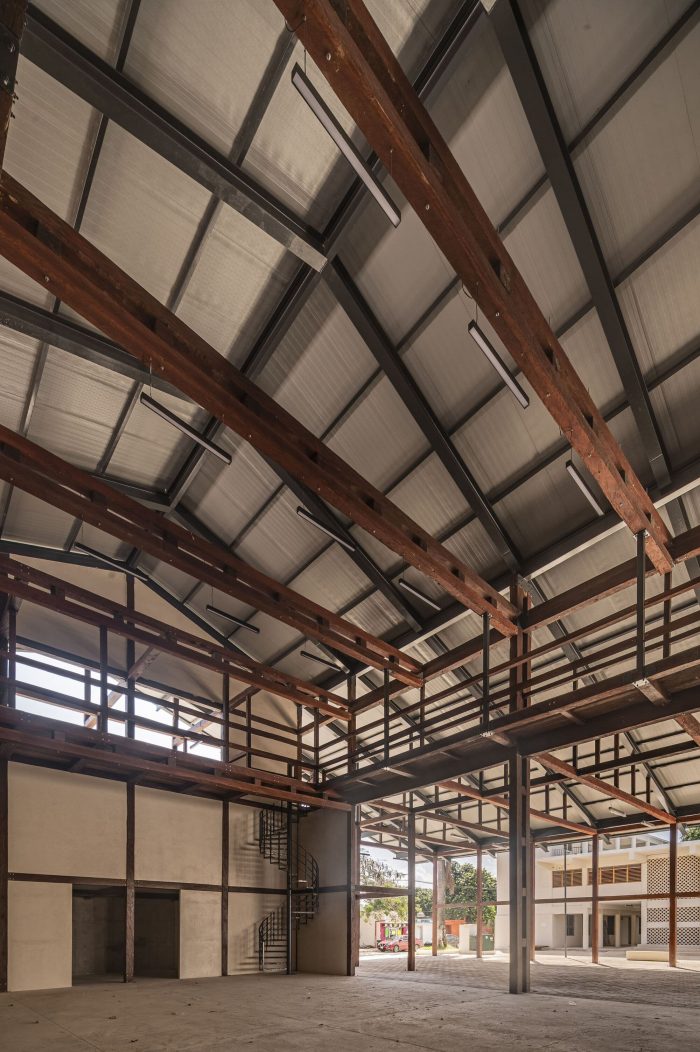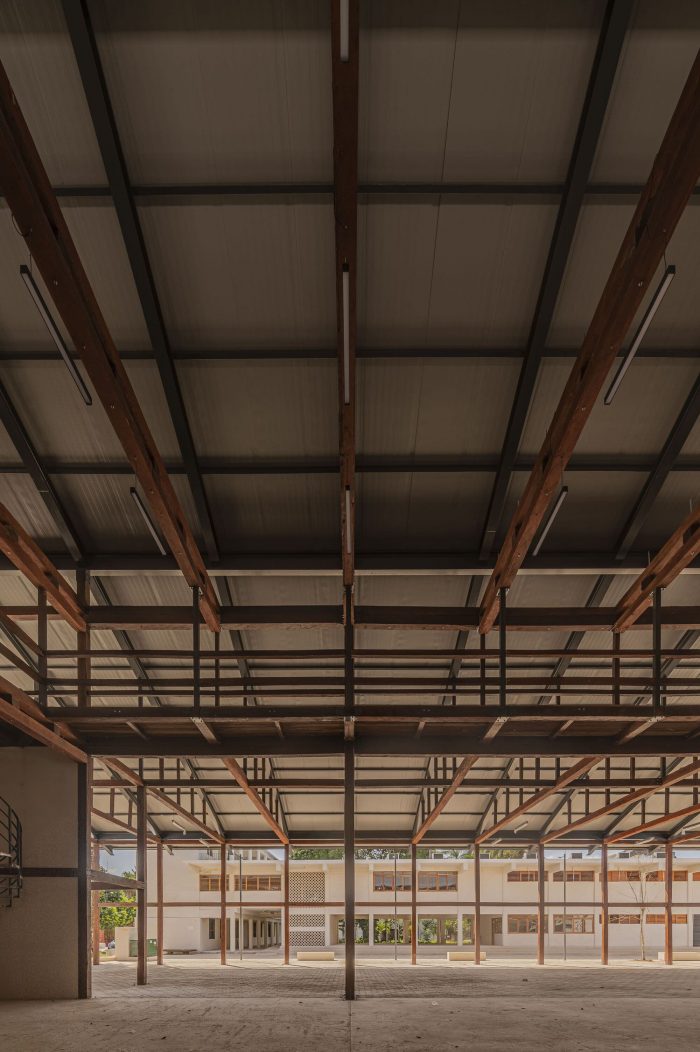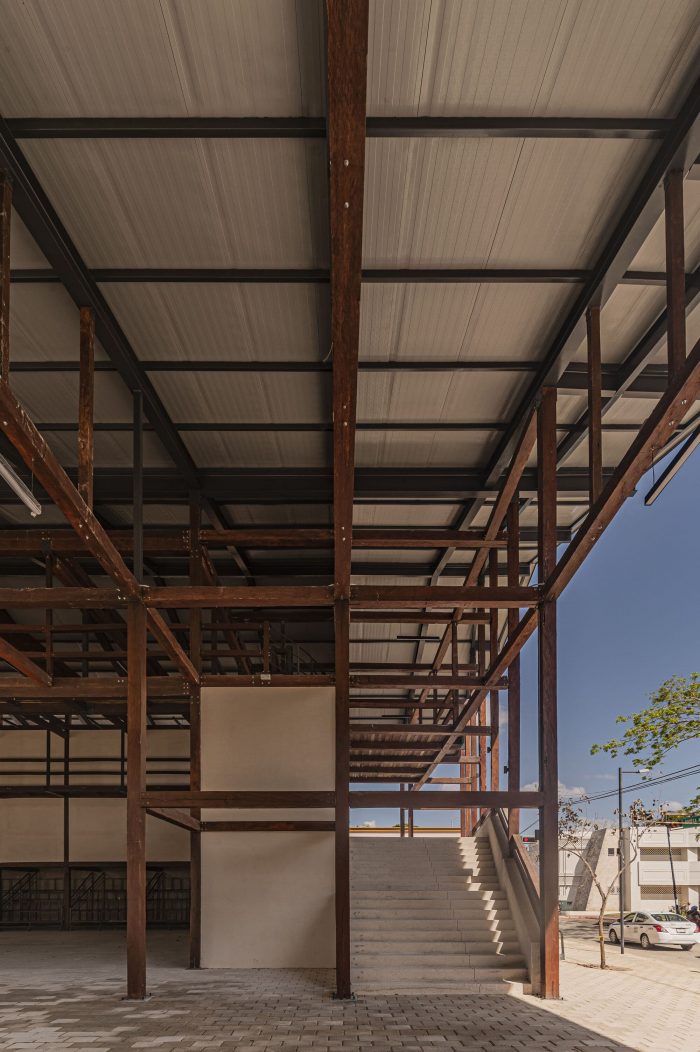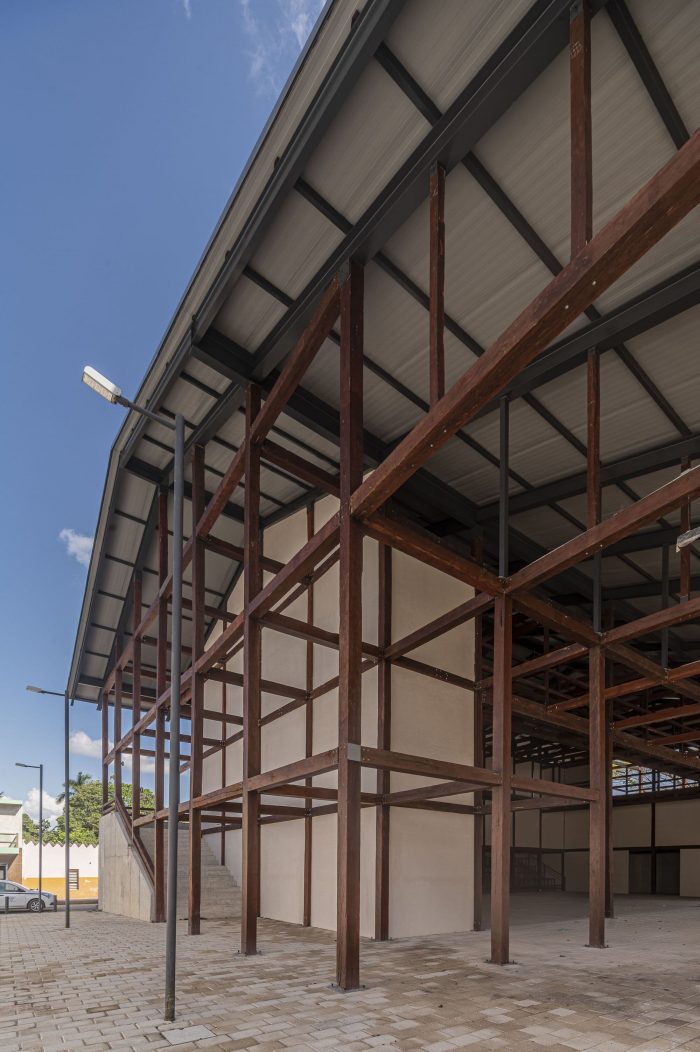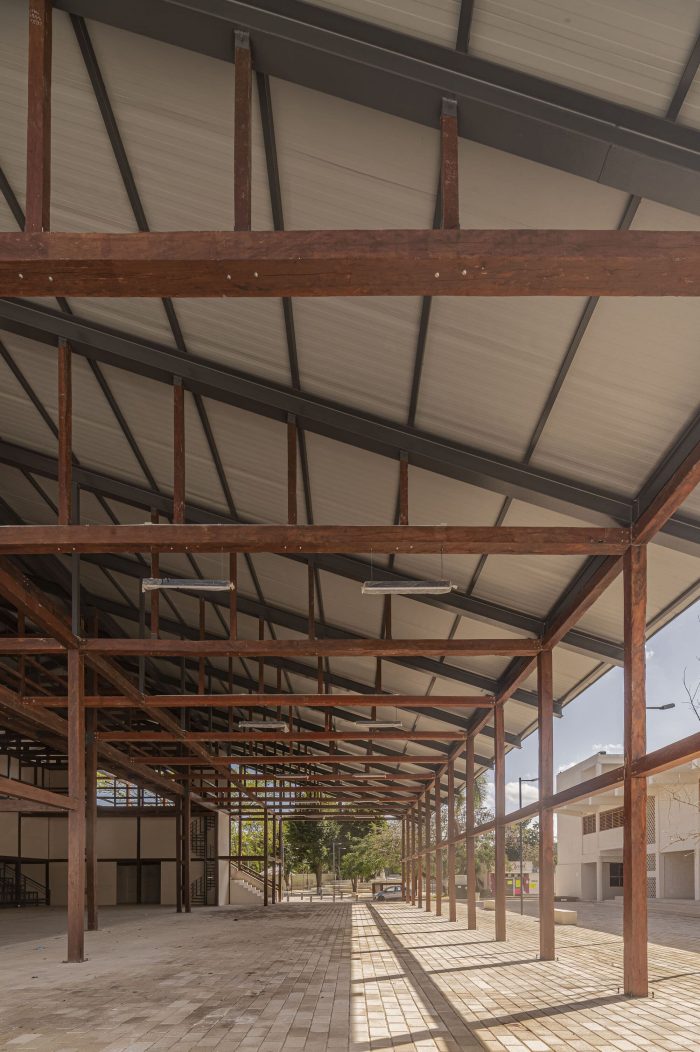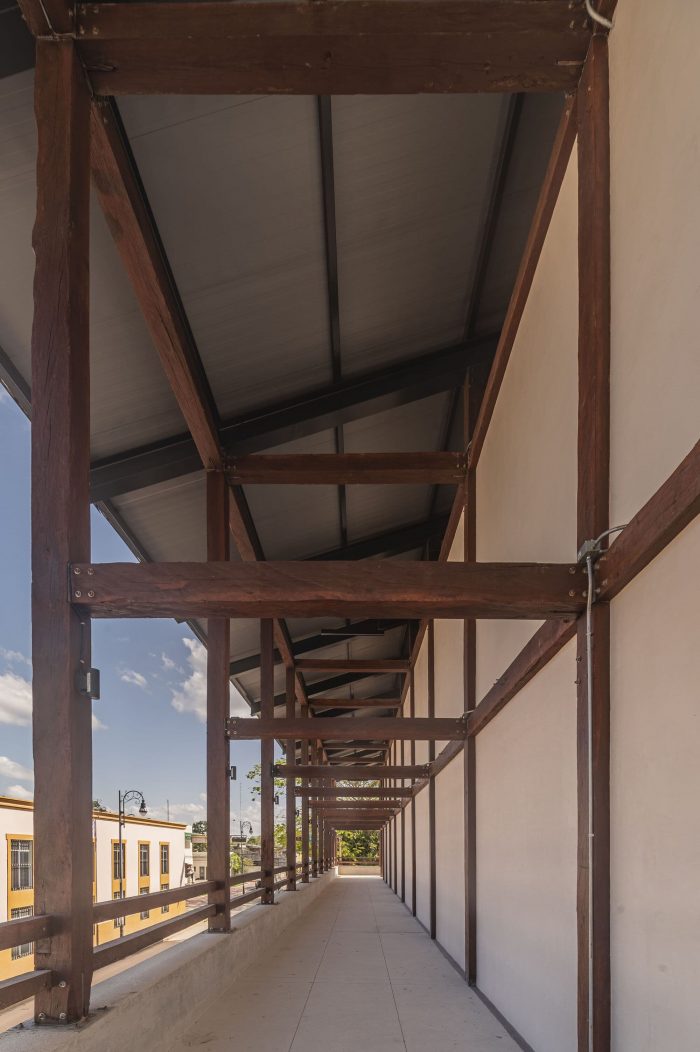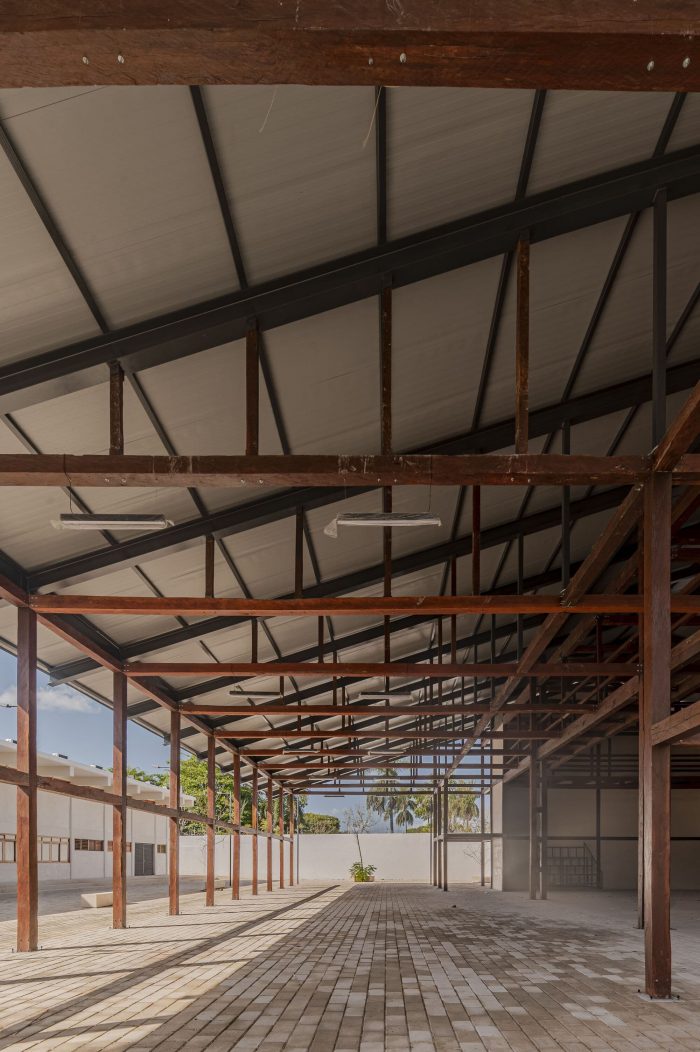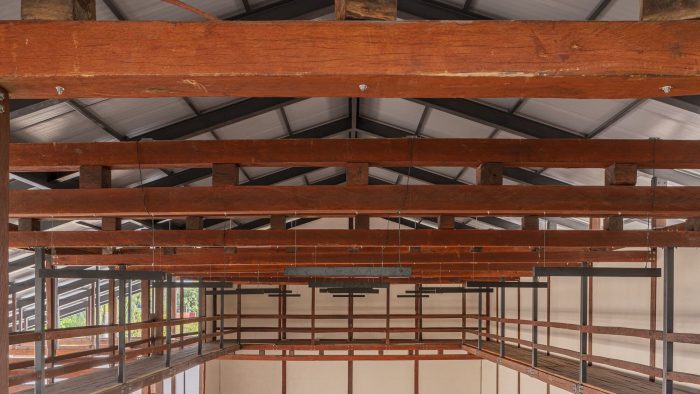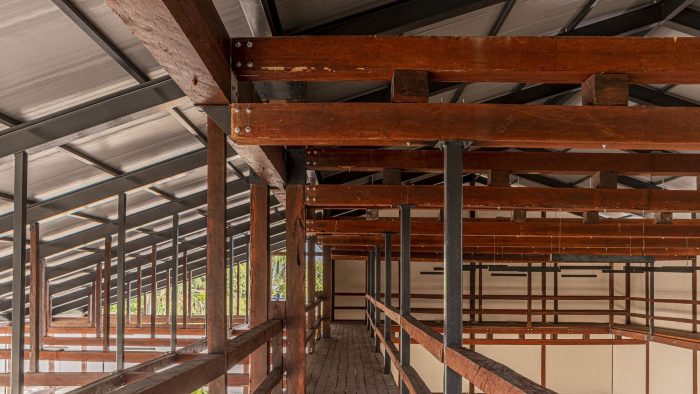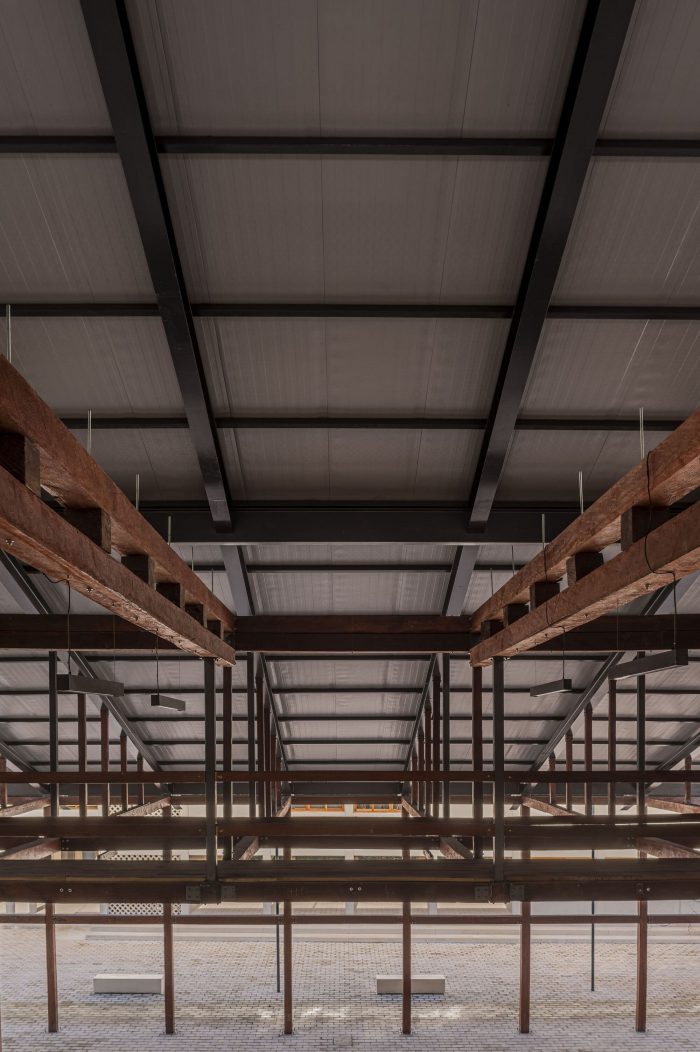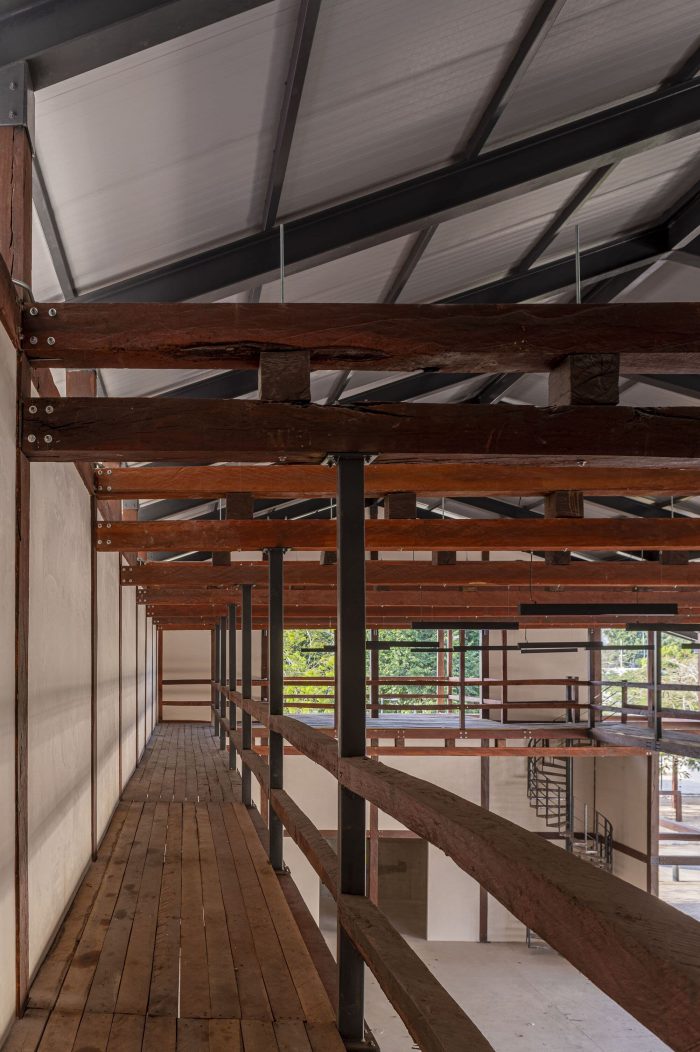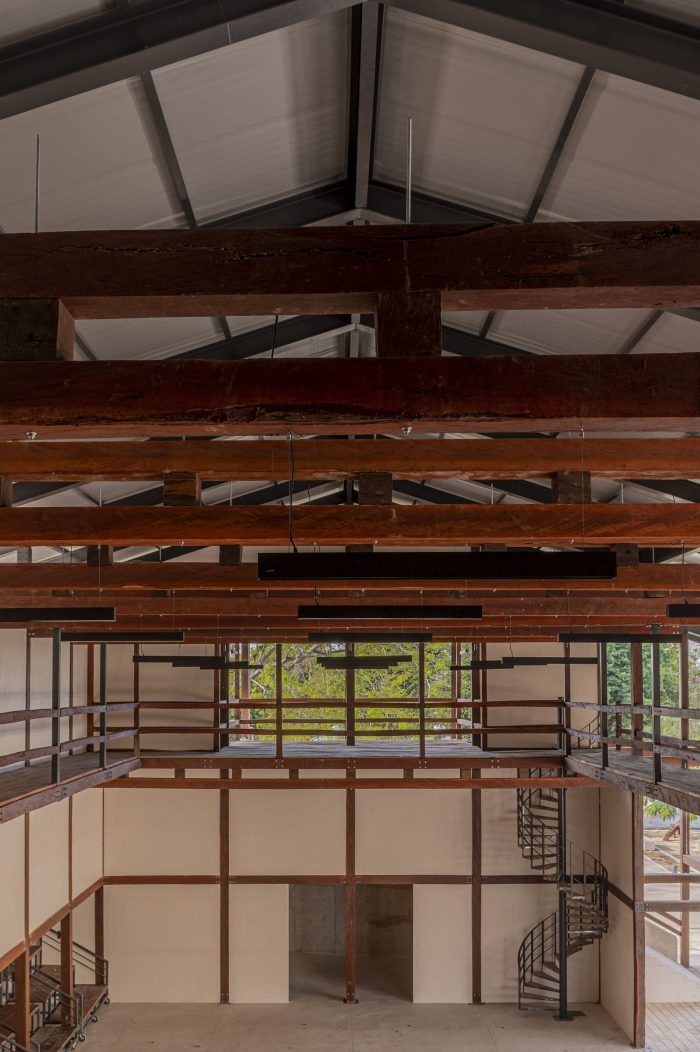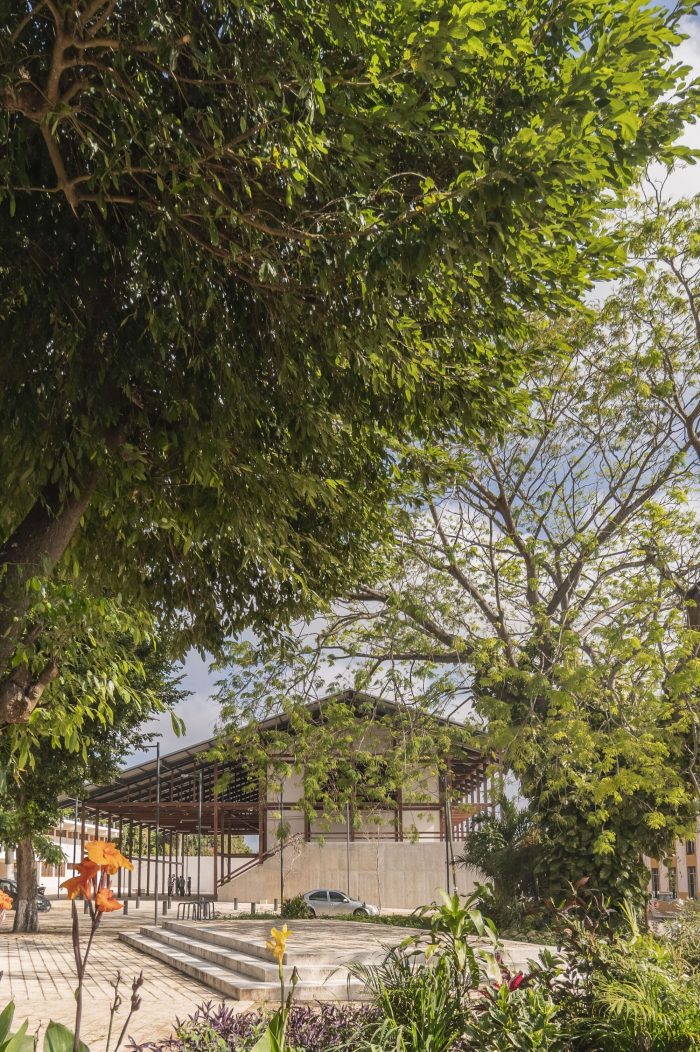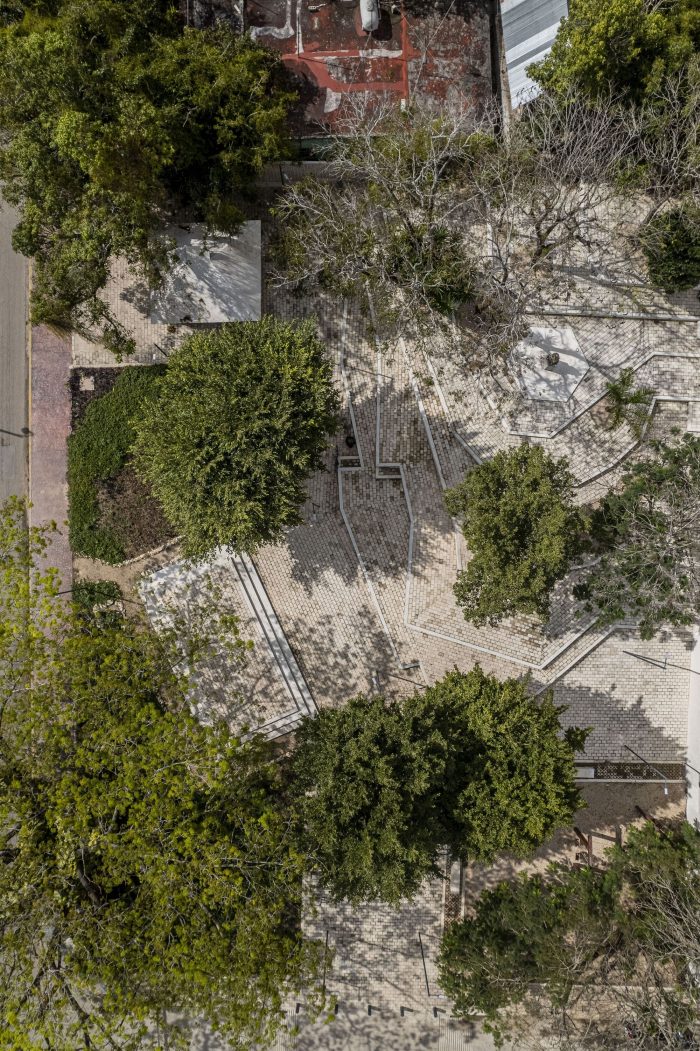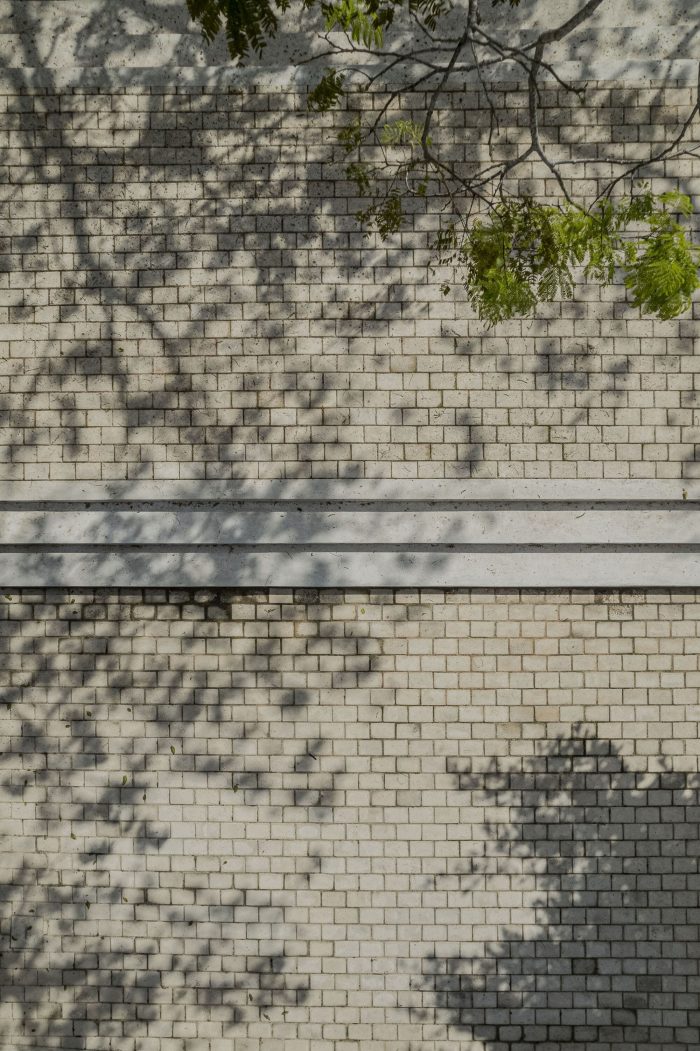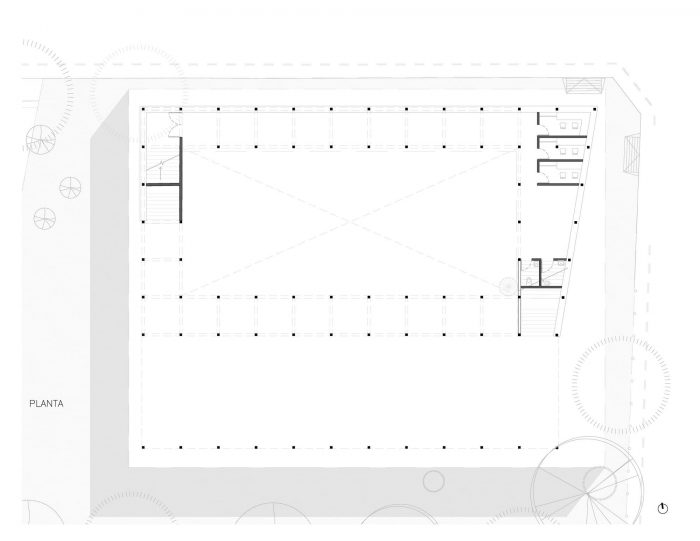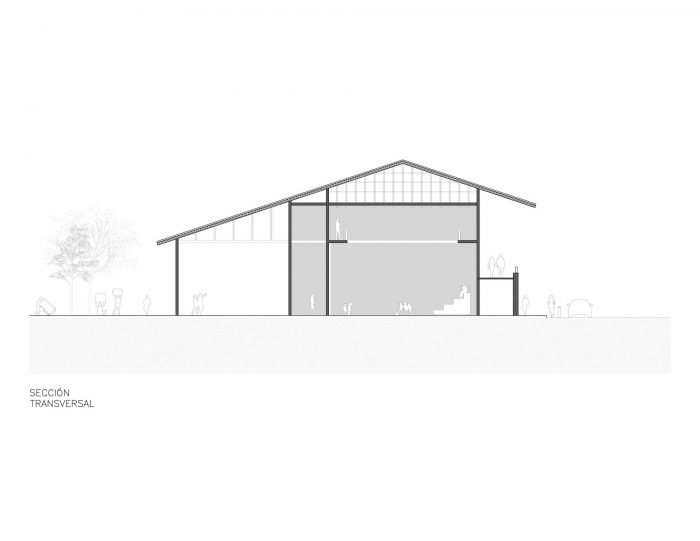沿海小镇费利佩-卡里略-波多的公共论坛代表了一个社区,它接受了玛雅人的祖传知识,即根据他们的环境用天然材料进行建筑。该市有丰富的植被,其地理条件,在红树林沼泽和低矮的落叶林中间,使其成为世界上各种木材物种的最后避难所之一。
The Public Forum of the small coastal town of Felipe Carrillo Puerto represents a community that embraces the ancestral Mayan knowledge of building with natural materials in relation to their environment. The municipality has exuberant vegetation and its geographical condition, in the middle of a mangrove swamp and a low deciduous forest, makes it one of the last refuges in the world for various species of wood.
在这个项目中,重点不仅在于场地,而且在于周围的环境。用树木周围的藤蔓将木材从编织的灯具转化为建筑物的结构,这一传统使儿童、妇女和男子为当地经济做出贡献成为可能,每一块木材都在女工匠的车间里用于自己的使用和销售,Bejuco和木材的工艺受到高度重视,其发展得到了推动。
In the project, the focus is not only on the site but on the surroundings. The tradition of transforming wood from woven lamps to structures for buildings with the vines that surround the trees makes it possible for children, women, and men to contribute to the local economy, each piece of wood is used in workshops of women artisans for their own use and sale, the craftsmanship in bejuco and wood is highly valued and its development has been boosted.
这种技术被推广到结构中,这些结构来自ejidos的社区组织,并使木材得到认证,从而减少了建筑和运输的影响。在对整个金塔纳罗奥州进行研究后,我们与NOH-BEC庄园达成协议,共同建设位于费利佩-卡里略港的新剧院。Ejido组织并实行了适应性强的整体森林管理,包括重新造林、修剪和砍伐的长期计划。
This technique is scaled up to the structures, which come from community organizations in ejidos, and allows the wood to be certified and thus reduces the impact of construction and transportation. After research throughout the Quintana Roo region, we agreed with the NOH-BEC Ejido to work together for the construction of the new theater in Felipe Carrillo Puerto. The Ejido is organized and practices an adapted and integral forest management which includes a long-term plan of reforestation, pruning, and cutting.
新剧院的建筑模块是基于他们可以提供和推荐的材料,所以设计是根据现有的尺寸和截面进行调整的,因为我们想在该地区提出一个易于复制的模式。新剧院的设计带回了古代玛雅小屋的典型元素:其屋顶是由木制框架构成的乡土住宅。
The construction modules of the new theater are based on the material they could supply and recommend, so the design was adapted to the dimensions and sections available, as we wanted to propose an easily replicable model in the region. The design of the new theater brings back typical elements of the ancient Mayan huts: vernacular dwellings whose roofs were made of wooden frames.
该项目通过使用该地区的材料来重新解释和加强它们,并将论坛变成一个交织着城镇中心的节点,可以从不同的点渗透进去。它可以在原有的公共广场上完全开放,也可以完全关闭,以适应任何文化活动。这是一个多功能的项目,以满足社区的需要,他们有斗争和组织的遗产,以保护他们的本土起源和生态系统。屋顶的高度和它的木质结构模式提供了极大的舒适性和巨大的使用潜力。它把我们带到了该地区的森林,金塔纳罗奥州拥有世界上最美丽的木材,有必要加强和促进该地区各种规模的木材采伐系统,以便将植被、土壤、水和社区联系起来,将它们视为一个整体。
The project reinterprets and enhances them by using materials from the area and turning the forum into a node that intertwines the center of the town and can be permeated from different points. It can be completely opened on the preexisting public square, and it can be completely closed adapting it to any cultural event. It is a versatile project to the needs of the community with a heritage of struggle and organization to defend their indigenous origins and their ecosystem. The height of the roof and its wooden structure pattern offers great comfort and great potential for appropriation. It takes us to the forest of the area, Quintana Roo has the most beautiful wood in the world and it´s necessary to strengthen and promote the wood harvesting system in the region at all scales so that it allows to link the vegetation, soil, water, and communities and see them as a whole.
Architects: ASPJ
Area : 1000 m²
Year : 2021
Photographs :Andrés Cedillo
Manufacturers : Philips
Lead Architect : Emiliano García Martín, Helene Carlo
Promotor : SEDATU, Meyer Falcón
Construction : PROVIMEX
Wood Construction : Ejido NOH-BEC
City : Felipe Carrillo Puerto
Country : Mexico


